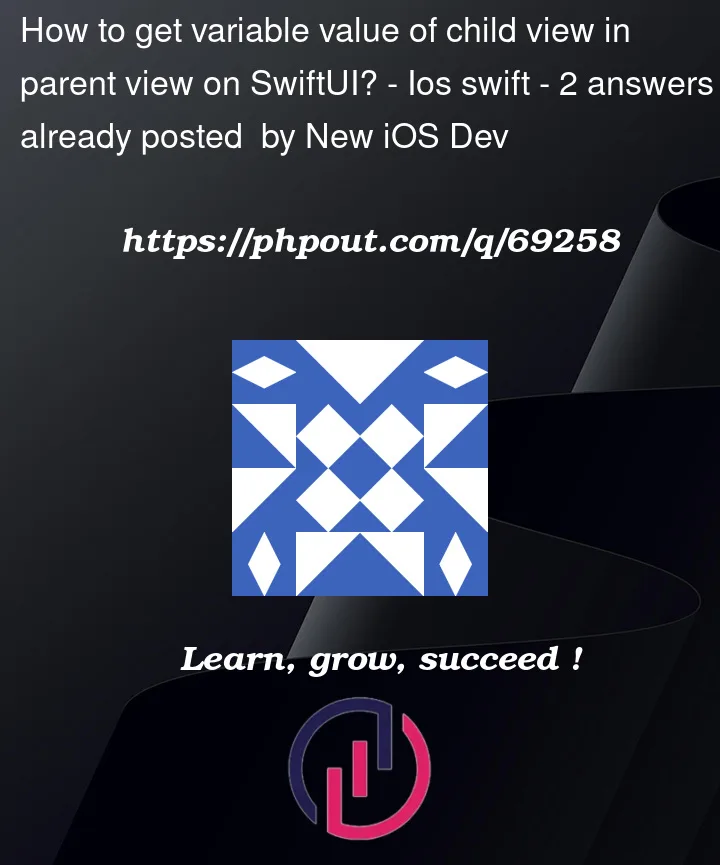I have one view "CancelRow", in which value of isSelected is changing
struct CancelRow: View {
@Binding var isSelected: Bool
init(isSelected: Binding<Bool>) {
self._isSelected = isSelected
}
@ViewBuilder var body: some View {
HStack {
Text(verbatim: "Hello, (isSelected)")
}
CustomCheckbox(checkboxType: .withTrailingLabel,
checkboxTitle: "", isActive: $canCancel, isSelected: $isSelected)
}
.onTapGesture {
isSelected.toggle()
}
}
I have another view i which i want to show button active or not based on "isSelected" from "CancelRow"
// AnotherVIew
CancelRow(isSelected: .constant(false))
Spacer()
SubmitButtonView(buttonTitle: title, buttonCallBack: {
goToOtherScreen()
}, isActive: isSelected ) // how to access this variable from "CancelRow"




2
Answers
As mentioned in the comments, state should be owned by a parent view and then passed to the child views.
In your case, you don’t actually need to use a custom initializer for
CancelRowin the example you gave (you could rely on just the synthesized initializer), but as request, this uses an initializer.There is this concept of
Source of truth. In oversimplified terms, you need to have a@State private varin one of your structs. If that@State private varholds any information some other struct would like to use, the second struct should have@Binding varand be initialised from the first struct with the value of@State private var.In code below struct
AnotherViewis the source of truth, it has@State private var, and other structs have@Bindingand are initialised with value of that@State private var.struct AnotherView:
struct CancelRow:
struct SubmitButtonView: